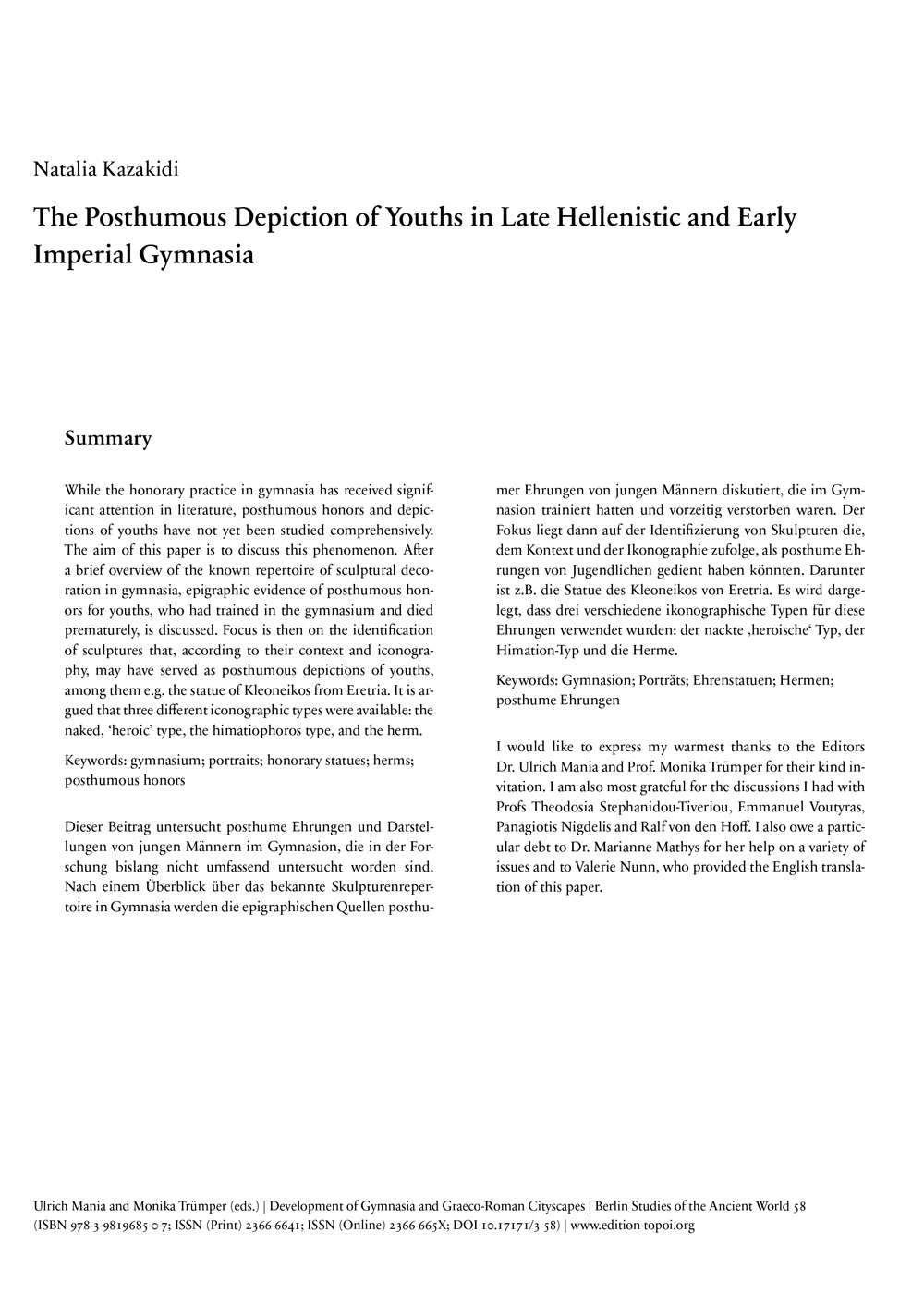The Posthumous Depiction of Youths in Late Hellenistic and Early Imperial Gymnasia
While the honorary practice in gymnasia has received significant attention in literature, posthumous honors and depictions of youths have not yet been studied comprehensively. The aim of this paper is to discuss this phenomenon. After a brief overview of the known repertoire of sculptural decoration in gymnasia, epigraphic evidence of posthumous honors for youths, who had trained in the gymnasium and died prematurely, is discussed. Focus is then on the identification of sculptures that, according to their context and iconography, may have served as posthumous depictions of youths, among them e.g. the statue of Kleoneikos from Eretria. It is argued that three different iconographic types were available: the naked, ‘heroic’ type, the himatiophoros type, and the herm.
Dieser Beitrag untersucht posthume Ehrungen und Darstellungen von jungen Männern im Gymnasion, die in der Forschung bislang nicht umfassend untersucht worden sind. Nach einem Überblick über das bekannte Skulpturenrepertoire in Gymnasia werden die epigraphischen Quellen posthumer Ehrungen von jungen Männern diskutiert, die im Gymnasion trainierten und vorzeitig verstarben. Der Fokus liegt dann auf der Identifizierung von Skulpturen die, dem Kontext und der Ikonographie zufolge, als posthume Ehrungen von Jugendlichen gedient haben könnten. Darunter ist z.B. die Statue des Kleoneikos von Eretria. Es wird dargelegt, dass drei verschiedene ikonographische Typen für diese Ehrungen verwendet wurden: der nackte ‚heroische‘ Typ, der Himation-Typ und die Herme.

